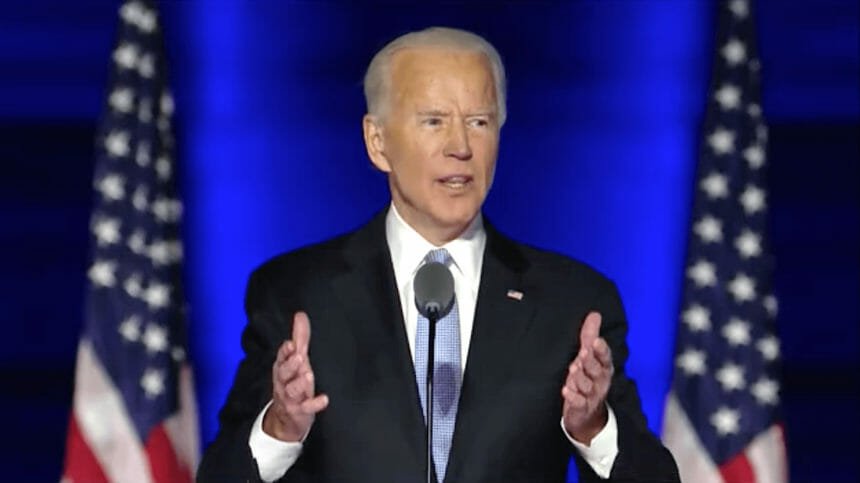
President-elect Joe Biden’s $1.9 trillion coronavirus rescue plan, unveiled Thursday evening, includes an initiative to “protect vulnerable populations in congregate settings,” but it may not go far enough to meet the needs of senior living and care, according to some industry leaders. Still, however, they expressed appreciation that the incoming administration is taking COVID-19 seriously.
The first of two relief proposals under Biden’s American Rescue Plan, according to the incoming administration, would provide “critical funding for states to deploy strike teams to long-term care facilities experiencing COVID-19 outbreaks — which may impede vaccination of residents and workers — and to conduct better infection control oversight.”
The plan notes that long-term care residents and workers account for almost 40% of all U.S. COVID-19 deaths. It also recognizes that African-American and Latina women, “who have borne the brunt of the pandemic,” are overrepresented among long-term care workers.
The plan also calls for investing in COVID-19 treatments; a national vaccination program and expanded COVID-19 testing; protections for frontline workers in the form of standards, paid emergency and sick leave requirements and benefits; and a $15 per hour minimum wage.
American Health Care Association / National Center for Assisted Living President and CEO Mark Parkinson, however, said the plan “fails to properly support our healthcare heroes, who are neck high in responding to the pandemic.”
Parkinson said Biden’s comment three weeks ago that “things are going to get worse” is ringing true in assisted living communities and nursing homes, as “each week brings record new cases and deaths due to soaring community spread.” He also said that long-term care and other healthcare providers need immediate financial aid to respond to the surge and keep their doors open.
“We urge the new administration and Congress to add another $100 billion to the Provider Relief Fund, as was passed in the HEROES Act last year, and dedicate a substantial portion of this fund to long-term care,” Parkinson said. “Our providers are on the brink, with exhausted staff and hundreds of facilities threatening to close. We must rally around our healthcare heroes and seniors in long-term care.”
‘Heartening’ acknowledgement of pandemic severity
LeadingAge President and CEO Katie Smith Sloan said it was “heartening” to hear the new administration acknowledge the severity of the pandemic, focus on a national approach to the next phase of relief and a proposal to “invest real money into solutions.”
“For the past 10 months, LeadingAge has been calling for a coordinated federal response to help aging services providers fight COVID-19 and keep older adults and their care workers safe,” Sloan said. “Without that, they’ve been using grit and dedication to navigate solutions for personal protective equipment, testing and funding to cover extraordinary pandemic-related expenses.”
Sloan said that experience has taught the industry that “the devil is in the details.”
“Only if these plans provide relief without creating new burdens will the incoming administration effectively protect lives,” Sloan said.
Argentum President and CEO James Balda said he agreed with the statement by Biden and others that the bipartisan relief bill signed into law in December was just a “down payment” on tackling the ongoing problems associated with the pandemic. He said he is pleased to see the incoming administration’s emphasis on improving the nation’s vaccination plan, investing in better testing, and protecting the nation’s most vulnerable citizens.
“Ten months ino the pandemic, the senior living industry is still grappling with rising costs and declining occupancy due to COVID-19, so it is essential that the American Rescue Plan includes additional funding for these providers to support ongoing operations,” Balda said. “This will ensure vulnerable seniors can continue living in their homes, and it will support the dedicated senior living workforce all across the industry caring for them.”
Balda also said it is imperative for those in senior congregate living settings to continue to be prioritized for vaccination and that rapid, efficient, effective and reliable testing is provided regularly to senior living communities.
“From the beginning of the pandemic, it’s been clear that older adults are most at risk from the harmful effects of COVID-19,” Balda said. “Protecting them and the staff who serve them needs to remain a legislative priority.”
American Seniors Housing Association President David Schless, who last week sent a letter to Biden and Vice President-elect Kamala Harris highlighting vaccine prioritization and targeted senior living COVID-19 relief, applauded Biden’s goal to accelerate the vaccine rollout, but he expressed concern that any deviation from Centers for Disease Control and Prevention priority vaccination recommendations.
“ASHA continues to raise the issue of independent living residents and staff being overlooked in some states and localities and [is] urging policymakers to include these communities in the [Pharmacy Partnership for Long-Term Care Program] to achieve the greatest efficiency in distribution and safety of residents,” Schless said.
Expanding access to younger age groups, as Operation Warp Speed officials announced last week, is “ill-advised” and would force independent living residents to compete with others in a “tedious and confusing” process, he added.
“Clinics must come to these seniors where they live. This is why the LTC pharmacy program or other similar programs must include independent living settings,” Schless said.




